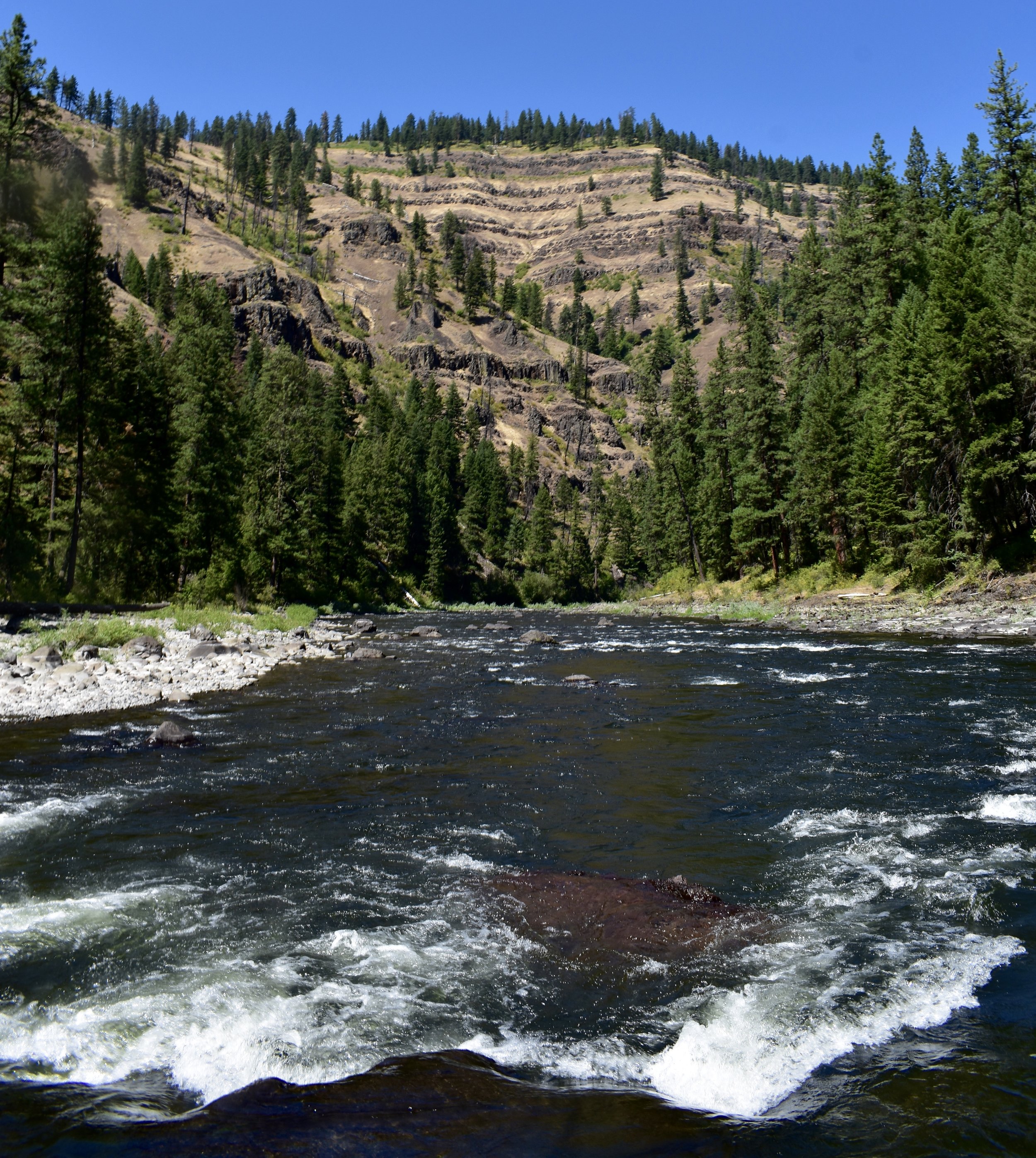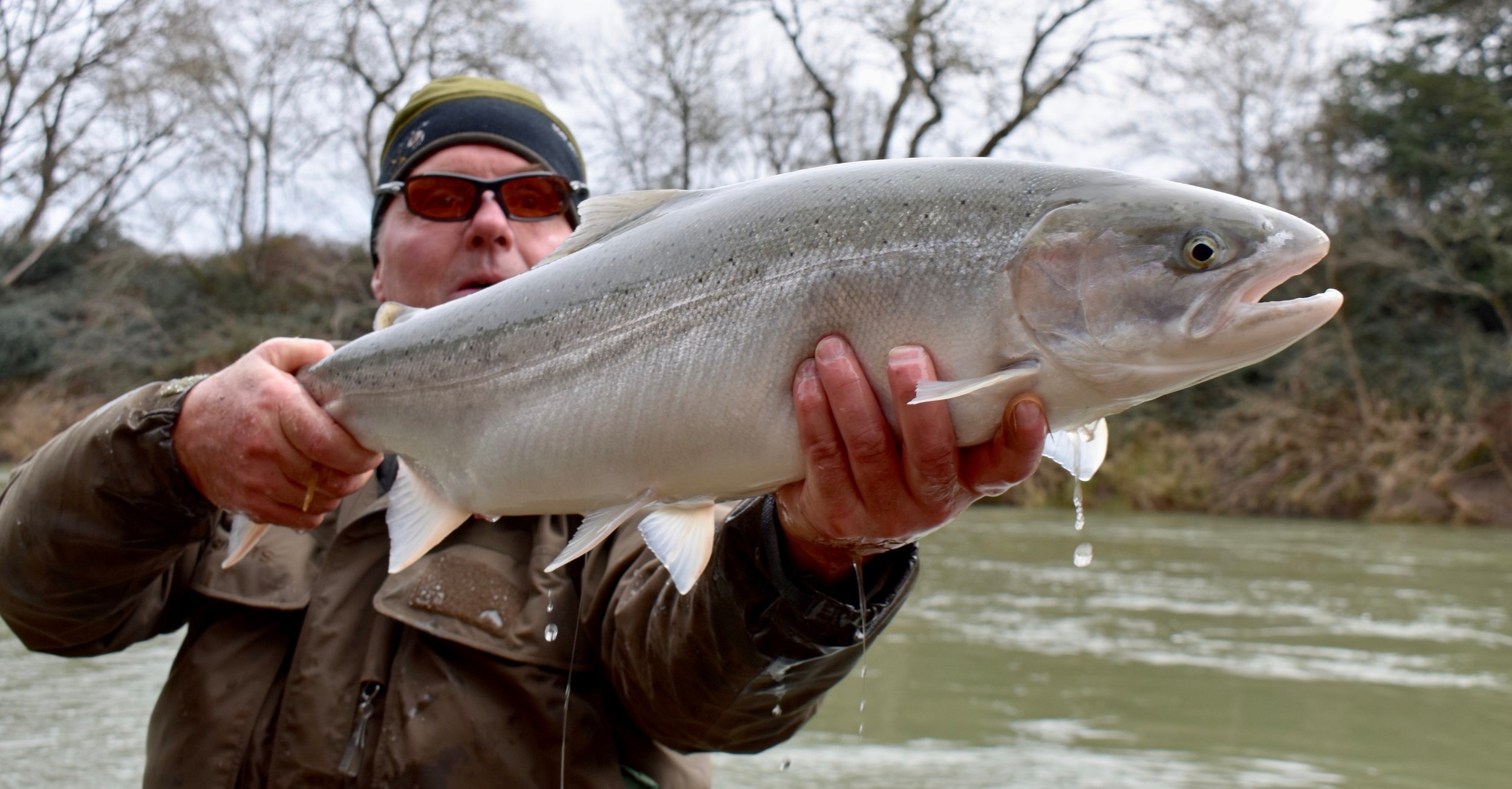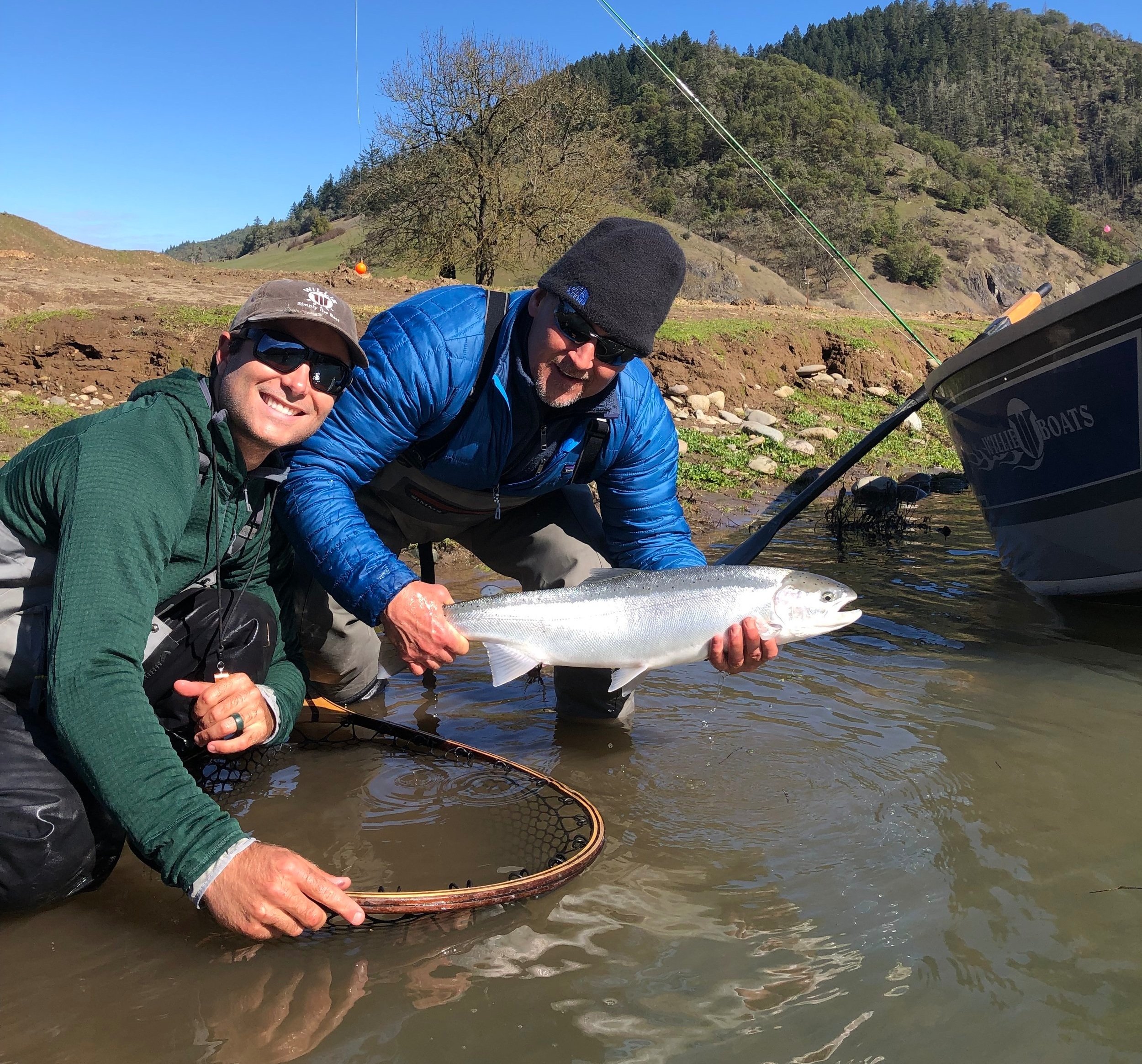Fishing small water can be a delightful passtime. I’ve found most known waters worth fly fishing also have many other miles of water worth exploring, offering smaller fish but more intimate experiences. Fishing a river system top to bottom will give you a better understanding of the watershed as a whole and hopefully, a better appreciation for the complex pieces that come together to form our favorite beats. I whole heartedly endorse exploring your favorite waters by following the river upstream as far as it will take you…
A River Trip Away
I find excitement in exploring what’s around the next bend; be it following the hatch on my local streams up river, the upcoming Steelhead season (spoiler alert: Steelhead are already here!) or floating a new Wild and Scenic River to celebrate one year of marriage with my amazing wife, Bridget.
In 1968, the Wild and Scenic Rivers act was passed into law in the same time period as other hallmark environmental works like the Clean Air Act and Clean Water Act. These laws help preserve the wild places we enjoy, and so many other ecosystem goods and services we often take for granted. Oregon alone has a plethora of protected waters worth experiencing, and while I am fortunate to guide several designated Wild and Scenic Rivers locally, there is something so exciting about floating a new one together.
The week before our trip, it became clear we were racing the unrelenting clock of diminishing river flows as the tail end of a healthy snowpack year descended off the high Wallowa Mountains, lowering river levels inches per day. Our scheduled launch date was just in the nick of time. Pushing off, the river was barley floatable. But once we were around the first bend and looking forward to four days and three nights ahead in a remote river canyon, our concerns of low water were swept away as our horizons filled with enchanting views and dancing water…
Fishing was of course part of the menu for this trip, but only an appetizer to the main course of solitude, scenery, quality camping, boating and wildlife viewing.
The river lent itself to classic freestone fishing approaches and after a few tinkerings of tactics and a few rods rigged, I settled for a dry dropper rig, finding the fish and water required little more than a good drift and being mindful of my shadows. Mornings were best and the river holds beautiful, wild Rainbow Trout, a few Bull Trout and abundant, large Whitefish. In fact, the Whitefish were the largest I have ever encountered, often pushing 18-20 inches.
Aiming to cover 40 some odd miles in 4 days, and at such a low flow meant covering long distances in technical, boulder strewn waters. The boating was demanding, but the miles melted away, and time, as it does in timeless places like the Wallowa-Grand Ronde, was replaced with the suns position in the sky, growing shadows on the water, and evening needs to find suitable camps, of which there were many.
Our first wildlife encounter was stunning, a Golden Eagle swooping to the right bank, talons extended, it’s prey squealing for life. The eagle soon flew off to a near cliff, perhaps disturbed by our presence, then to our astonishment, the large weasel that had just been screaming bloody murder picked itself up and slinked into the bushes, gravely wounded or hardly hurt, we couldn’t tell…
Later, bright white shapes along the right side of the river piqued our interest, until the Mountain Goats came into focus and our jaws dropped. We floated right upon a family group of 7, working their way downriver at a clip much faster than I would have imagined. Their powerful hind quarters and sure footed hooves propelled them over the uneven rocks, muscles rippling. Disinterested in our presence, they ate, drank, played and cooled off in the sand while we floated by.
Not long after, but on the opposite bank, a group of Big Horn sheep escaped the afternoon heat on the rivers edge and allowed us another great opportunity to observe more of the canyon’s permanent residents. Like the goats before, they seemed disinterested in us, as if they knew we were transient and would soon be on our way to leave them to go about their lives as they did yesterday and will continue tomorrow.
Four days and three nights, even in a place like this, still goes by too fast. I feel you could spend a life time in places like this and still only partially grasp its entirety. We had a great trip, and I’ll mark this as one of my favorites. It’s one Bridget and I plan to repeat, perhaps a little earlier in the season with more water in the river to aid our progress, and perhaps a few days extra to forget time, enjoy more fishing and enjoy a river trip away.
Fly Fishing Southern Oregon Winter Steelhead
From December - April the rivers and streams of Southern Oregon see noteworthy runs of Winter Steelhead. The wide variety of river types across the region allow anglers the ability to stay in good fishing conditions in all but the worst winter storms.
Most Southern Oregon Steelhead gradually make their way upstream over the season, but all rivers in our area feature a few fast running fish that make it into their spawning areas in a flash. It’s never a bad idea to target these fish early and high in the system as these can often be the largest, meanest and most memorable of the season.
When’s the best time to go?
Any time you can!
By February, nearly all of the Southern Oregon streams we guide have fishable numbers of Steelhead, and we simply target these fish based on which of our 7 area steelhead rivers provide the best conditions for the trip. We run our trips out of Ashland, OR and the greater Rogue River Valley, allowing easy day trips to all but the Coast and North Umpqua River.
Later in the season, including March and April the upper reaches of our rivers are typically fishing the best and have high concentrations of steelhead. We love fishing the spring months as water temperatures are often a bit warmer, the days are longer and the stream side vegetation is bursting to life. The Upper Rogue is a great, spring, steelhead river.
Winter Steelhead fly fishing in its truest form is actually quite simple. Most of the challenge to catching these fish on a regular basis can be boiled down to two main factors: Conditions, and location. I have found steelhead will eat a bottle cap in the right mood, and when fishing is tough, but conditions are good, I’d bet you that X-Ray river goggles would show that all the great water you were fishing didn’t have any fish in it after all. This is where the river knowledge of a local guide can come into play and help you find the fish of a thousand casts with more predictability.
What conditions to look for?
In general we look for a dropping or somewhat stable river in winter and spring. As each system in our region reacts differently to storms, rain, snow, melt and erosion, we rely on the experience hundreds of days a year on the water to help us stay on the fish and give our guests the highest chance of success.
Both swing fishing with spey rods and indicator fishing are effective ways to take Winter Steelhead. Higher water and heavy currents are the norm, as well as cold water that slows fish metabolism. Deep water nymphing is by far the most productive method, but there is no higher challenge than swinging up steelhead in the winter. Patience and persistence can benefit you greatly.
How to catch them?
To catch winter steelhead, a good place to start is with a 7 or 8 wt rod for both swing fishing and indicator fishing. Remember, spey and single hand setups are different!
For swinging winter steelhead, try a short Skagit style shooting head, a 10ft sink tip of T-11 or 14 and a large fly that will stand out against the often faster and colored water of winter. Look for water with a walking pace. Think low, and think slow. Swinging up these fish is a matter of patience, determination and efficiency.
To be in the zone nymphing, adjust the depth of your (heavy!) fly to be 1.5 times the depth of the water you intend to fish and focus on a long dead drift. Remember when nymphing deep it takes a few seconds longer for your flies to hit the fish zone. Cast further upstream in the lane with a longer cast to compensate and then get good at stack mending to continue the drift down stream.
Worthington Fly Fishing has learned the intricacies of successfully catching Southern Oregon Steelhead on the fly and we love connecting our guests with the Northwest’s most fabled fish. If you’re looking to learn more about Winter Steelheading in Southern Oregon and having a great day on the water consider booking a trip with once of our local guides to unlock the mystery of these these amazing fish.
Tight lines!
A Few Favorites from 2018
What a year!
We had memorable fish, the best company and great river conditions as a daily theme. As we turn the page on 2018 and into 2019 we’re looking back on some of our favorite shots and moments from another year on the river.
It was and will continue to be simply amazing out there. Thank you and cheers to 2019!


















